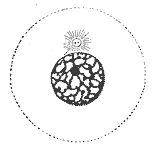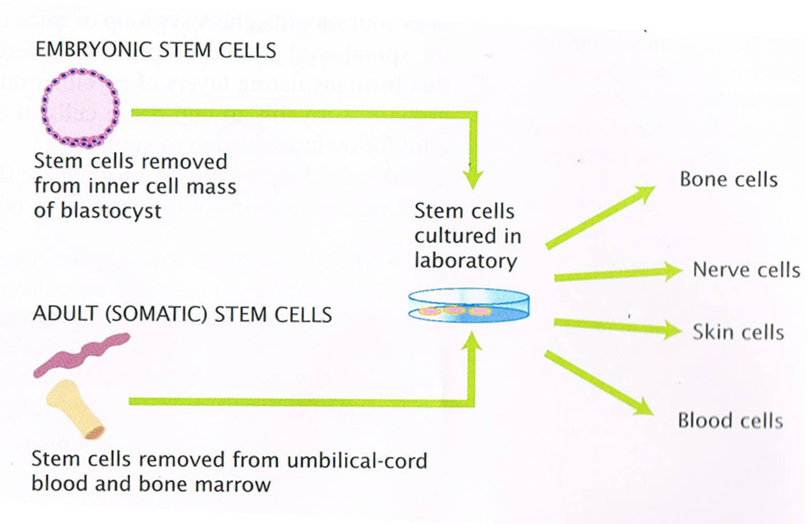Benjamin Maglajac
Stem Cells
What is a stem cell?
A stem cell is an undifferentiated or only partially
differentiated cell that is not yet associated with a determined function in an
organism. A stem cell can either renew itself and produce identic cells through
cell division or differentiate into further specialized cells. Depending on
their ability to further differentiate, stem cells can be classified in
totipotent, pluripotent or multipotent stem cells (Fig. 1). (National Institutes of Health)
Totipotent stem cells have the ability/potential to develop into
an independent organism. They can only be found at the beginning of embryonal
development (embryonic stem cells).
Pluripotent stem cells have the ability/potential to give rise to
any type of cell. However, they cannot develop into an independent organism.
Pluripotent cells can be both, embryonic or adult stem cells.
Multipotent stem cells have the ability/potential to give rise
different types of cells of a certain tissue.
Obtaining stem cells
As we learned before, there are different levels of potency that a
stem cell can have. Also, there are different methods for the exploitation of
stem cells. The stem cells potency, discussed above (what is a stem cell) also
depends on the source of exploitation.
Following I will focus on three basic methods and point out the
specific advantages and disadvantages of each method.
Obtaining embryonic stem cells: embryonic stem cells, as their name
suggests, are pluripotent stem cells that can only be obtained from a fertilized
egg. After a few divisions when the fertilized egg reaches the stage of a blastocyst
after a few divisions, the inner cells of the blastocyst are taken away which
kills the fertilized egg. The cells gained by this procedure have an almost
unlimited growth potential as well as the ability to differentiate into any
type of specialized cell. However used for transplantation embryonic stem cells
have a higher risk of becoming tumor cells than adult stem cells and rejection
problems may occur.
Obtaining stem cells from the umbilical cord of a new born baby:
hereby stem cells are gained from the blood extracted from the umbilical cord
after it has been discarded as a process after every birth. Other than the embryonic
stem cells this type of stem cells only has a limited potential for
differentiation (multipotency, mainly blood cells). Great advantages of this
method are that cord blood stem cells are easily obtained and stored and that
there is a very low risk of rejection when used for therapy. However cord blood
stem cells can only be obtained in small quantities.
Obtaining adult stem cells from deep tissues like bone marrow or
fat tissue includes a more complex process of transplantation. As well as core
blood stem cells adult stem cells have a limited growth potential and lower
differentiation potential. Advantages of that method are the low risk of a
tumor development and the compatibility of adult stem cells (Fig.2)
(our biology book)
Stem cell therapy for Leukemia
The most commonly use of stem cells for therapeutic measures
occurs in the treatment of leukemia. Leukemia is a type of cancer where
cancerous blood cells, formed by mutation, appear to crowd out healthy blood
cells in the bone marrow. The most commonly occurring type of leukemia leads to
an overproduction of white blood cells, the so called lymphoblasts. This
overproduction if not therapeutically treated leads to death in most cases. In
order to heal a patient with leukemia first all the cancerous blood cells in
the bone marrow must be killed which is being done by chemotherapy, the
treatment with cell-killing chemicals. After that a transplant of healthy adult
stem cells from a donor are put into the bone marrow where, after successful
establishment, they again start producing blood cells.
Ethical aspects of the stem cell therapy
The research and on the usage of stem cells for therapeutic means
is one of the most controversial topics in medicine. Especially the usage of embryonic
stem cells for research and therapy brings up a lot of ethical concerns. Is it
ethical to artificially create and destroy life just in order to gain the
highly potential stem cells of an embryo? Along this question, the next
question that arises is when does an organism start to be “alive”? On the other
hand did the usage of stem cells already reduced a lot of suffer and saved many
lifes. But then again I personally ask myself if it is even good to keep on
doing research in order to save so many lives? Isn’t our planet already overpopulated?
And at what point does research has to stop? Soon we might be able to perform
actual human cloning or grow our steaks on a dish just by using stem cells. But
how are those desirable achievements? All these are neither yes- nor no-
questions. In my opinion there is no right or wrong but we will certainly have to
question our values and probably restate our perception of the value of life.















